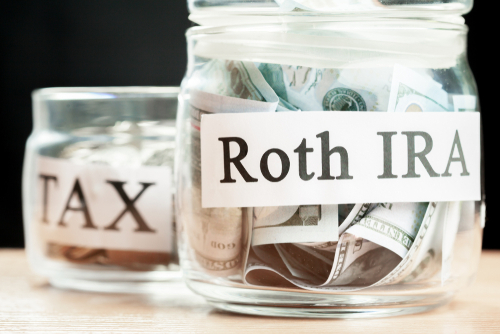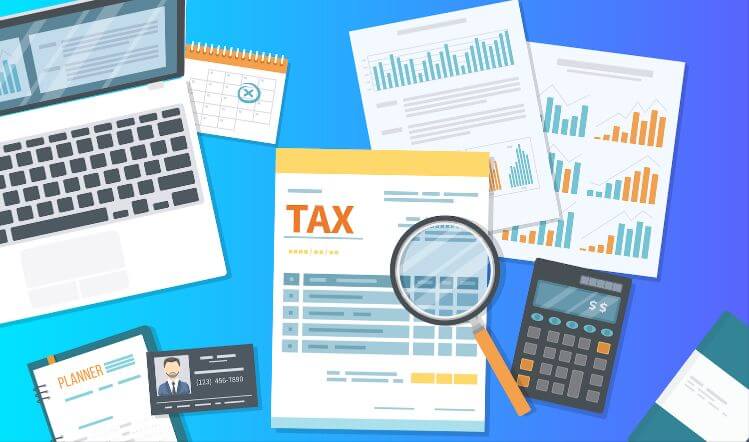As a tech-forward investor, you see the world differently. You’re not following the herd into index funds or the next trendy ETF. Instead, you’re looking ahead—at decentralized finance (DeFi), smart contracts, AI-driven assets, and blockchain protocols that promise to reshape entire industries. You thrive in volatility because you know that outsized returns require stepping outside the norm. But as you execute trade after trade on Coinbase, Kraken, or IRAfi Crypto, the excitement of profit quickly fades when you realize the IRS is taking a cut—every single time.
Every gain, no matter how small, triggers a taxable event. It’s death by a thousand paper cuts—short-term capital gains can take up to 37% of your profit if you’re in a high tax bracket. Even long-term gains don’t escape, slicing away 15–20% or more of your upside. What if there was a way to keep all of that exponential growth?
Key Takeaways
- A Self-Directed Roth IRA lets your crypto grow tax-free, avoiding capital gains on every trade and maximizing long-term returns.
- Unlike regular plans, SDIRAs give you full control to buy, hold, and trade real crypto—not just ETFs or related stocks.
- If you’re bullish on crypto’s future, a Roth IRA is the smart, long-term strategy to turn belief into lasting, tax-free wealth.
The Problem with Standard Crypto Trading: The Inevitable Tax Bill
Crypto rewards bold conviction—but taxes punish precision. Every time you successfully time the market or rotate into a new token, the IRS is waiting. Take a simple example: you buy Ethereum (ETH) at $1,800 and sell it at $2,400. That $600 gain might feel like a win, but it comes at a cost—Uncle Sam now considers that a taxable event. Depending on how long you held the asset, you’re either paying short-term capital gains (taxed like ordinary income, up to 37%) or long-term gains (typically 15–20%). Either way, a chunk of your return is gone before it can compound.
Now imagine you’re an active trader, flipping tokens weekly or even daily. Maybe you’re rotating out of BTC into ETH, then taking a shot on a small-cap gem like INJ, AVAX, or RUNE. Each profitable move triggers a new tax liability—even if your entire portfolio ends the year in the red. That’s the kicker: you can owe taxes on realized gains while losing money overall.
This is the paradox of active crypto investing in a taxable environment. Your strategy may be airtight, your timing perfect—but after-tax, your gains shrink. What should’ve been a breakout year becomes just an expensive lesson in tax inefficiency.
Worse still, this constant tax friction changes behavior. It discourages long-term thinking and tempts investors into short-term trading based on tax seasons instead of conviction. And in a space where asymmetric returns reward patience, that’s a losing game.
Without a tax-sheltered vehicle, you’re essentially growing someone else’s wealth—the government’s!
The Roth IRA: Your Ultimate Weapon for Tax-Free Growth

Enter the Roth IRA, the most misunderstood but powerful wealth-building vehicle in the U.S. tax code. While traditional IRAs offer an up-front tax deduction, the Roth flips that script. You pay taxes now on contributions, but from there, all gains grow—and are withdrawn—completely tax-free assuming certain conditions are met.
Think about that for a moment: If your $5,000 Roth contribution grows into $500,000 from early Etherum investments—or the next Solana, Chainlink, or Ordinals play—you’ll never owe a cent of tax on it. Not today, not ever.
That’s why Roth IRAs are the secret weapon of the financially literate. For those who believe in the exponential future of decentralized technologies, putting crypto in a Roth IRA is like turbocharging your retirement—without handing your upside to the IRS.
Unlocking Crypto with a Self-Directed Roth IRA
But here’s the frustrating reality: most traditional financial institutions still treat crypto like a liability, not an opportunity. These are the same firms that were slow to embrace online trading, skeptical of ETFs in their early days, and now—predictably—skeptical of digital assets. Try opening a Roth IRA at Vanguard, Fidelity, or Schwab and buying actual Bitcoin. Spoiler: you can’t.
At best, you’ll find crypto-themed products—think ETFs or funds that hold stock in crypto-adjacent companies like Coinbase or Nvidia. But let’s be honest: that’s not the exposure you want. Buying a Blockchain ETF is like investing in a gold mining company when what you really want is physical gold. It’s indirect. It’s diluted. And it’s disconnected from the decentralized revolution you believe in.
That’s where the Self-Directed IRA flips the script. It gives you full autonomy over your retirement capital—no gatekeepers, no narrow menus, and no watered-down exposure. Want to buy and hold Bitcoin long-term? No problem. Interested in Ethereum’s future as the foundation for DeFi and NFTs? You got it. Looking to speculate on high-upside Layer 1s like Solana, Avalanche, or other altcoins? That’s on the table too.
With a provider like IRA Financial, which helped pioneer crypto investing inside tax-advantaged accounts, you’re not just opening an IRA, you’re unlocking a customizable, blockchain-native portfolio that grows tax-free. This isn’t a traditional financial product retrofitted for crypto—it’s a crypto-first strategy designed to take full advantage of the Roth IRA’s power.

Best of all, you maintain control—not just of your investment decisions but also of custody. Many investors choose secure, institutional-grade custodians who handle private key management and cold storage, while others prefer to use multi-signature wallets for added control. And the reward? If your crypto thesis plays out—if that $10,000 Bitcoin investment grows into $500,000 over the next decade? You keep it all! No capital gains tax. No selling-season calculations. Just clean, compounding growth that stays in your hands, not the IRS’s.
This is what a true forward-thinking financial structure looks like—freedom, control, and zero tax on upside.
Traditional vs. Roth Crypto IRA: A Quick Comparison
Here’s a deeper breakdown of which structure may work best for you:
| Feature | Traditional SDIRA | Roth SDIRA |
|---|---|---|
| Tax on Contributions | Pretax (lowers taxable income today) | After-tax (no deduction) |
| Tax on Growth | Tax-deferred | Tax-free |
| Tax on Withdrawals | Ordinary income rates | 100% tax-free assuming they are qualified |
| Best For | High earners wanting immediate deduction; shorter time horizons | Long-term investors expecting high growth and higher future tax brackets |
| Crypto Use Case | Conservative, stablecoins or yield strategies | High-growth plays like altcoins, NFTs, DeFi |
Bottom line: If you’re 20–40 years old and bullish on crypto’s long-term trajectory, a Roth SDIRA can be a generational wealth-building engine!
Addressing Your Concerns: Security and Simplicity
Security: You’ve read the headlines: exchanges getting hacked, users losing private keys, rug pulls. Security is non-negotiable. That’s why institutional-grade custody is at the core of any serious crypto IRA platform. IRAfi leverages regulated custodians and battle-tested wallet technology to store your assets safely—offline, in cold storage, and away from prying eyes.
Simplicity: Worried that this sounds complicated? It’s not. A quality SDIRA provider makes on-boarding easy. Account setup, rollover paperwork, compliance—handled. You focus on the part that matters: identifying high-conviction crypto opportunities. Think of it like Coinbase meets Fidelity—crypto-native trading in a tax-advantaged wrapper.
Book a free call with a self-directed retirement specialist
- Review your self-directed retirement options
- Learn about investing in alternative assets
- Get all of your questions answered
The Verdict: Don’t Just Invest in the Future—Secure Its Gains
You already believe in the future. You’ve put in the time—reading whitepapers, listening to podcasts, following the dev updates on GitHub. You’ve stayed up during overnight market cycles, held through volatility, and placed bold bets on the technologies reshaping finance, identity, and ownership. But bold investing without smart tax planning? That’s like racing a Ferrari with the parking brake on—powerful potential, constantly held back by unnecessary friction.

That’s where the Self-Directed Roth IRA comes in. It’s not just a retirement account, it’s an optimization engine. A vehicle purpose-built for those who think long-term, believe in exponential growth, and don’t want to share the upside with the IRS. It’s the bridge between your investment vision and the kind of wealth that changes not just your future, but your freedom.
When you invest through a Roth IRA, you’re not just hoping crypto will moon, you’re positioning yourself so that if it does, every dollar of that growth stays yours. No tax drag. No forced sales to cover IRS bills. Just clean, compounding returns inside one of the most powerful tax structures ever created. A Roth IRA that lets you own your crypto directly? That’s a wealth-building tool and a personal freedom statement all in one.
You already understand the power of decentralization. Now it’s time to apply that same philosophy to your wealth strategy: own your assets, eliminate unnecessary taxes, and invest like the future is already here.
Turn Your Crypto Gains into Tax-Free Retirement Wealth
Stop giving a cut of your profits to the IRS on every trade. With a Self-Directed Roth IRA, you can buy, hold, and trade real crypto inside a tax-advantaged account—keeping every dollar of growth for yourself.
👉 Schedule a Free Consultation to discuss crypto in a Roth IRA.
👉 Confident and ready to start? Open Your Account Today.
Frequently Asked Questions
What cryptocurrencies can I trade in a Self-Directed IRA?
With a platform like IRAfi, you can buy, hold, and trade Bitcoin, Ethereum, Solana, Chainlink, Avalanche, and more than 40 other approved tokens. New tokens may be added based on demand and due diligence reviews.
What are the contribution limits for a Roth IRA in 2025?
In 2025, you can contribute up to $7,000 if you’re under 50, or $8,000 if you’re 50 or older. Note that income limits apply for direct Roth contributions—but Backdoor Roth strategies are available for higher earners.
What are the fees associated with a Crypto IRA?
Many providers, including IRAfi, charge a low annual account maintenance fees (around $100). Other fees are often built into a competitive trade spread (around 1%).
Is my crypto insured like money in a bank?
No. Crypto assets are not insured by FDIC or SIPC. However, qualified custodians often carry private insurance, and cold storage custody dramatically reduces exposure to hacks. Security is a shared responsibility—choose your platform wisely.
Can I roll over an existing IRA or 401(k) into a Roth Crypto IRA?
Yes. You can perform a Roth conversion, rolling over traditional IRA or pretax 401(k) funds into a Self-Directed Roth IRA. You’ll owe income tax on the conversion amount, but all future growth is tax-free. Many investors convert when crypto prices are low to minimize taxes.



